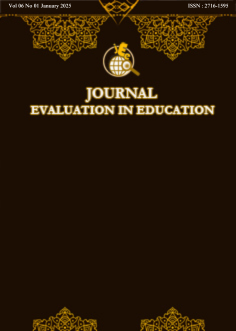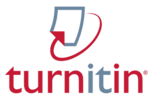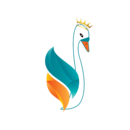Digital Era Dynamics: Uncovering Self-Regulation Patterns in Science Learning Among Border Region Junior High School Students
Abstract
Purpose of the study: The research objective is to provide essential insights into students' self-regulation characteristics in border regions, which can inform strategic efforts to maintain and improve their capabilities as they navigate the challenges of the digital era.
Methodology: This study used quantitative research with descriptive data analysis involving 198 students from three junior high schools in Nunukan Regency. Data was collected using a self-regulation questionnaire with a Likert scale, which measured four indicators: forethought, volitional control, motivation, and self-reflection. The data was then analyzed using score and average calculations to assess the students' self-regulation profile.
Main Findings: The study findings reveal that the self-regulation profile of junior high school students in Nunukan Regency is generally in the high category, with an average of 77%. The motivation indicator reached the highest level at 81%, while volitional control was the lowest at 72%. Notably, differences in self-regulation levels were observed across the participating schools and grade levels.
Novelty/Originality of this study: This study provides a comprehensive understanding of the self-regulation characteristics of students in the border area of Nunukan Regency, which can serve as a basis for developing more effective learning strategies and improving the quality of education in similar contexts. The findings offer valuable insights that can inform the development of targeted interventions and support systems to cater to the specific needs of learners in border regions as they navigate the challenges of the digital era.
References
N. Afrianty and F. Yolviansyah, “Analisis pengaruh sikap toleransi terhadap hasil belajar siswa fisika di kelas XII IPA SMA Negeri 2 Kota Jambi [Analysis of the influence of tolerance attitudes on physics learning outcomes of class XII IPA SMA Negeri 2 Kota Jambi],” J. Eval. Educ., vol. 2, no. 4, pp. 144–147, 2021, doi: 10.37251/jee.v2i4.244.
S. Sunandari, A. N. A. Sari, S. Mustainah, M. Viftar, and ..., “Pengaruh era digital pada pembentukan karakter anak di sekolah dasar [The influence of the digital era on the formation of children's character in elementary schools],” J. …, vol. 05, no. 04, pp. 11644–11648, 2023.
L. Kartina, N. Nurmeimana, I. Abamba, and A. J. Aswad, “Ability analysis of providing explanations and strategies in learning science,” J. Eval. Educ., vol. 4, no. 3, pp. 88–94, 2023, doi: 10.37251/jee.v4i3.699.
N. M. Bayantari, S. H. Indonesiani, and P. I. B. Apsari, “Regulasi diri dalam belajar dan hubungannya dengan stres akademik pada mahasiswa tingkat pertama fakultas kedokteran [Self-regulation in learning and its relationship with academic stress in first year medical students],” J. Imiah Pendidik. dan Pembelajaran, vol. 6, no. 3, pp. 609–618, 2022, doi: 10.23887/jipp.v6i3.51175.
B. J. Zimmerman, “Attaining self-regulation : A social cognitive perspective. In M. Boekaerts, P. R. Pintrich, & M. Zeidner (Eds.), Handbook of self-regulation,” Handb. Self-Regulation, pp. 13–39, 2000.
L. Steinberg, “Cognitive and affective development in adolescence,” Trends Cogn. Sci., vol. 9, no. 2, pp. 69–74, 2005, doi: 10.1016/j.tics.2004.12.005.
M. Gajda, A. Małkowska-Szkutnik, and W. Rodzeń, “Self-Regulation in adolescents: Polish adaptation and validation of the self-regulation scale,” Int. J. Environ. Res. Public Health, vol. 19, no. 12, 2022, doi: 10.3390/ijerph19127432.
A. L. Grinin, “Self-Regulation as a global evolutionary mega-trend,” pp. 139–164, 2016.
P. A. C. Dinata, Rahzianta, and M. Zainuddin, “Self regulated learning sebagai strategi membangun kemandirian peserta didik dalam menjawab tantangan abad 21 [Self-regulated learning as a strategy to build student independence in responding to the challenges of the 21st century],” in Prosiding Seminar Nasional Pendidikan Sains (SNPS), 2016, pp. 139–146.
C. Emita and S. Lukas, “The effect of learning independence, self-regulation, and social support on learning achievement among psychology department students x university in Covid-19 pandemic era,” JTP - J. Teknol. Pendidik., vol. 24, no. 3, pp. 283–294, 2022, doi: 10.21009/jtp.v24i3.28814.
I. G. Pratama, “Kunci sukses pembelajaran efektif: Tinjauan systematic literature review memahami hubungan [Keys to successful effective learning: A systematic literature review understanding the relationship],” Psycho Aksara, vol. 2, no. 1, pp. 73–79, 2024.
D. D. Utami, P. Setyosari, W. Kamdi, S. Ulfa, and D. Kuswandi, “The effect of smart-pbl learning strategy and academic-self regulated learning on metacognitive & problem-solving skills in learning chemistry,” Period. Tche Quim., vol. 17, no. 35, pp. 960–976, 2020, doi: 10.52571/ptq.v17.n35.2020.79_utami_pgs_960_976.pdf.
Y. Karlen, S. Hertel, and C. N. Hirt, “Teachers’ professional competences in self-regulated learning: An approach to integrate teachers’ competences as self-regulated learners and as agents of self-regulated learning in a holistic manner,” Front. Educ., vol. 5, no. September, pp. 1–20, 2020, doi: 10.3389/feduc.2020.00159.
N. K. A. A. Nita and G. N. S. Agustika, “Efikasi diri dan regulasi diri berpengaruh terhadap motivasi belajar pada siswa [Self-efficacy and self-regulation influence students' learning motivation],” Mimb. PGSD Undiksha, vol. 11, no. 1, pp. 81–90, 2023, doi: 10.23887/jjpgsd.v11i1.58234.
W. Dai, Z. Li, and N. Jia, “Self-regulated learning, online mathematics learning engagement, and perceived academic control among Chinese junior high school students during the COVID-19 pandemic: A latent profile analysis and mediation analysis,” Front. Psychol., vol. 13, no. November, pp. 1–11, 2022, doi: 10.3389/fpsyg.2022.1042843.
L. Huang et al., “Visualization analysis of global self-regulated learning status, hotspots, and future trends based on knowledge graph,” Sustain., vol. 15, no. 3, pp. 1–20, 2023, doi: 10.3390/su15032798.
H. O. Ahmad, “Dinamika Pendidikan Formal di Perbatasan (Studi Kasus Sekolah Tapal Batas di Kecamatan Sebatik Tengah Kabupaten Nunukan Kalimantan Utara),” 2018.
A. Ursache, R. G. Barajas-Gonzalez, and S. Dawson-McClure, “Neighborhood influences on the development of self-regulation among children of color living in historically disinvested neighborhoods: Moderators and mediating mechanisms,” Front. Psychol., vol. 13, no. October, pp. 1–17, 2022, doi: 10.3389/fpsyg.2022.953304.
E. Latipah, H. C. A. Kistoro, and H. Putranta, “How are the parents involvement, peers and agreeableness personality of lecturers related to self-regulated learning?,” Eur. J. Educ. Res., vol. 10, no. 1, pp. 413–425, 2021, doi: 10.12973/EU-JER.10.1.413.
C. A. Prigantari, “Hubungan pola asuh orang tua dan regulasi diri dengan motivasi berprestasi citra [The relationship between parenting patterns and self-regulation with image achievement motivation],” Psikoborneo J. Ilm. Psikol., vol. 7, no. 2, pp. 234–240, 2019, doi: 10.30872/psikoborneo.v7i2.4778.
R. Hamdiyah, M. Y. M. El-Yunusi, and D. Darmawan, “Pengaruh kebiasaan belajar, regulasi diri dan lingkungan sosial terhadap prestasi belajar siswa MTs Al-Ikhwan Gresik [The influence of learning habits, self-regulation and social environment on the learning achievement of students at MTs Al-Ikhwan Gresik],” J. Educ., vol. 6, no. 4, pp. 21190–21210, 2024, doi: 10.31004/joe.v6i4.6036.
C. A. R. Putrie, “Pengaruh regulasi diri siswa terhadap prestasi belajar siswa kelas viii pada mata pelajaran ips [The influence of student self-regulation on the learning achievement of grade VIII students in social studies subjects],” Res. Dev. J. Educ., vol. 7, no. 1, p. 136, 2021, doi: 10.30998/rdje.v7i1.8105.
A. H. Ziadat and M. A. Sakarneh, “Academic achievement and self-regulated learning from parent’s perspective of student with learning difficulties,” Int. J. Eval. Res. Educ., vol. 11, no. 3, pp. 1028–1039, 2022, doi: 10.11591/ijere.v11i3.22177.
E. K. Essa, “Strategies for Self-regulated learning and associated impact on academic achievement in an EFL context,” EduLine J. Educ. Learn. Innov., vol. 2, no. 4, pp. 533–540, 2022, doi: 10.35877/454ri.eduline1451.
N. Nurfadhilah, “Analisis Pendidikan Karakter Dalam Mempersiapkan Pubertas Menuju Generasi Emas Indonesia 2045,” J. Pendidik. Dasar, vol. 10, no. 1, pp. 85–100, 2019, doi: 10.21009/jpd.v10i1.11124.
B. J. Zimmerman, “A social cognitive view of Self-Regulated academic learning,” J. Educ. Psychol., vol. 81, no. 3, pp. 329–339, 1989, doi: 10.1037/0022-0663.81.3.329.
C. A. Wolters, P. R. Pintrich, and S. A. Karabenick, Assessing Academic Self-Regulated Learning, Vol 3. Boston: The Search Institute Series on Developmentally Attentive Community and Society, 2005, doi: 10.1007/0- 387-23823-9 16
D. Straub, M.-C. Boudreau, D. Gefen, D. Straub, M. Boudreau, and D. Gefen, “Communications of the association for information systems validation guidelines for is positivist research validation guidelines for is positivist research validation guidelines for is positivist research,” Commun. Assoc. Inf. Syst., vol. 13, no. 13, pp. 380–427, 2004.
H. Taherdoost, “Validity and reliability of the research instrument; How to test the validation of a questionnaire/survey in a research,” SSRN Electron. J., vol. 5, no. 3, pp. 28–36, 2018, doi: 10.2139/ssrn.3205040.
S. Arikunto, Prosedur Penelitian Suatu Pendekatan Praktik. Jakarta: Rineka Cipta, 2010.
J. Zhang and L. J. Zhang, “Exploring the profiles of foreign language learners’ writing self-regulation: focusing on individual differences,” Read. Writ., 2024, doi: 10.1007/s11145-024-10568-x.
B. J. Zimmerman, Self-Regulated Learning: Theories, Measures, and Outcomes, Second Edi., vol. 21. Elsevier, 2015. doi: 10.1016/B978-0-08-097086-8.26060-1.
E. Panadero, “A review of self-regulated learning: Six models and four directions for research,” Front. Psychol., vol. 8, no. APR, pp. 1–28, 2017, doi: 10.3389/fpsyg.2017.00422.[34] E. K. N. Matitaputty and F. Kurniawati, “Effectiveness of Self-Regulated learning intervention program in forethought phase of a school underachiever,” Psychol. Res. Urban Soc., vol. 3, no. 2, p. 109, 2020, doi: 10.7454/proust.v3i2.95.
E. K. N. Matitaputty and F. Kurniawati, “Effectiveness of self-regulated learning intervention program in forethought phase of a school underachiever,” Psychol. Res. Urban Soc., vol. 3, no. 2, p. 109, 2020, doi: 10.7454/proust.v3i2.95.
J. Husman and L. Corno, “Volitional control of learning,” Int. Encycl. Educ. Third Ed., pp. 724–731, 2009, doi: 10.1016/B978-0-08-044894-7.00604-7.
J. Breitwieser and G. Brod, “The interplay of motivation and volitional control in predicting the achievement of learning goals: An intraindividual perspective,” J. Educ. Psychol., vol. 114, no. 5, pp. 1048–1061, 2022, doi: 10.1037/edu0000738.
M. F. A. F. Majid, M. F. Nalva, and B. Baharuddin, “Self Control dalam meningkatkan konsistensi belajar akademik [Self Control in improving academic learning consistency],” KONSELING J. Ilm. Penelit. dan Penerapannya, vol. 1, no. 1, pp. 41–48, 2019, doi: 10.31960/konseling.v1i1.339.
R. M. Ryan and E. L. Deci, “Intrinsic and extrinsic motivation from a self-determination theory perspective: Definitions, theory, practices, and future directions,” Contemp. Educ. Psychol., vol. 61, no. xxxx, p. 101860, 2020, doi: 10.1016/j.cedpsych.2020.101860.
L. Zhang et al., “Neural representation and modulation of volitional motivation in response to escalating efforts,” J. Physiol., vol. 601, no. 3, pp. 631–645, 2023, doi: 10.1113/JP283915.
D. H. Schunk and J. A. Greene, Handbook of Self-Regulation of Learning and Performance, Second Edi. Newyork: Routledge, 2018. doi: 10.4324/9780203839010.
C. Dignath and G. Büttner, “Teachers ’ direct and indirect promotion of self-regulated learning in primary and secondary school mathematics classes – insights from video-based classroom observations and teacher interviews Content courtesy of Springer Nature , terms of use apply. Ri,” pp. 127–157, 2018.
J. A. Sloan and T. E. Frank, “Student self-assessment data: an instrument for program assessment,” Intersect. A J. Intersect. Assess. Learn., vol. 4, no. 2, 2023, doi: 10.61669/001c.84511.
D. Paquette and J. Ryan, “Bronfenbrenner ’ s Ecological Systems Theory,” pp. 1–4, 2001.
C. A. Wolters and M. Hussain, “Investigating grit and its relations with college students’ self-regulated learning and academic achievement,” Metacognition Learn., vol. 10, no. 3, pp. 293–311, 2015, doi: 10.1007/s11409-014-9128-9.
M. N. Wangid, “The role of Self-Motivation in Self-Regulated learning,” PSIKOPEDAGOGIA J. Bimbing. dan Konseling, vol. 11, no. 1, p. 14, 2022, doi: 10.12928/psikopedagogia.v11i1.14175.
W. Guo, “Grade-Level differences in teacher feedback and students’ Self-Regulated learning,” Front. Psychol., vol. 11, no. May, pp. 1–17, 2020, doi: 10.3389/fpsyg.2020.00783.
S. A. Abbas, Z. N. Kusumawardani, N. F. Suprayitno, and N. Jafar, “Driving factors of motivation and its contribution to enhance performance. innovative,” J. Soc. Sci. Res., vol. 3, no. 2, pp. 7266–7280, 2023.
M. Muraven, “Building Self-Control strength: Practicing Self-Control leads to improved Self-Control performance,” NIH Public Access, vol. 46, no. 2, pp. 1–9, 2010, doi: 10.1016/j.jesp.2009.12.011.Building.
American Psychological Association, “Strengthening Self-control,” Am. Psychol. Assoc., pp. 13–15, 2020.
M. Ardelt and S. Grunwald, “The importance of self-reflection and awareness for human development in hard times,” Res. Hum. Dev., vol. 15, no. 3–4, pp. 187–199, 2018, doi: 10.1080/15427609.2018.1489098.
Copyright (c) 2025 Luqmanul Hakim Abi Abdillah, Rusdiman Buhera, Agung Wijaya Subiantoro, Shafina Ade Pratiwi, Insih Wilujeng, Laifa Rahmawati

This work is licensed under a Creative Commons Attribution 4.0 International License.
Authors who publish with this journal agree to the following terms:
- Authors retain copyright and acknowledge that the Integrated Science Education Journal is the first publisher licensed under a Creative Commons Attribution 4.0 International License.
- Authors are able to enter into separate, additional contractual arrangements for the non-exclusive distribution of the journal's published version of the work (e.g., post it to an institutional repository or publish it in a book), with an acknowledgment of its initial publication in this journal.
- Authors are permitted and encouraged to post their work online (e.g., in institutional repositories or on their website) prior to and during the submission process, as it can lead to productive exchanges and earlier and greater citation of published work.









.png)
.png)





